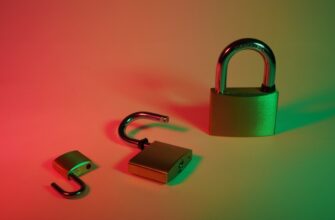## Why Anonymizing Accounts Matters More Than Ever
In today’s hyper-connected world, learning how to **anonymize account anonymously** isn’t just for activists or whistleblowers—it’s essential for anyone valuing digital privacy. Data breaches affect millions annually, and corporations routinely track user behavior. Proper anonymization severs ties between your identity and online activities, protecting you from targeted ads, identity theft, and surveillance. Crucially, the *process itself* must be anonymous to prevent leaving digital breadcrumbs that defeat the purpose.
## 7 Best Practices to Anonymize Accounts Anonymously
### 1. Start with a Privacy-First Mindset
– Never use personal devices or networks tied to your identity
– Assume all platforms log metadata (IP addresses, timestamps)
– Plan steps before execution to minimize exposure windows
### 2. Leverage Anonymous Infrastructure
– **VPNs/Tor**: Route traffic through encrypted tunnels to mask IP addresses
– **Public Wi-Fi**: Access accounts from untraceable locations (libraries, cafes)
– **Virtual Machines**: Use temporary OS environments (e.g., Tails OS) that leave no traces
### 3. Create Disposable Identities
– Generate fake names with random username generators
– Use temporary email services (ProtonMail, Guerrilla Mail)
– Avoid biometrics or phone verification; opt for VoIP numbers if required
### 4. Purge Existing Data Methodically
– Delete historical posts, photos, and metadata
– Replace identifiable info with generic placeholders
– Use tools like *JustDeleteMe* to find account deletion paths
### 5. Break Cross-Platform Connections
– Never link anonymous accounts to personal social media
– Avoid reusing usernames, avatars, or email signatures
– Clear cookies between sessions with privacy browsers (Brave, Firefox Focus)
### 6. Encrypt Everything
– Enable end-to-end encryption (Signal, Keybase)
– Store credentials in encrypted password managers (KeePassXC)
– Use PGP keys for sensitive communications
### 7. Maintain Operational Security
– Regularly rotate access points and credentials
– Monitor for data leaks with services like *Have I Been Pwned?*
– Never discuss anonymization efforts on non-anonymous channels
## Critical Mistakes to Avoid
– **Using personal devices**: Even incognito modes retain forensic traces
– **Rushing the process**: Hasty actions lead to overlooked metadata
– **Overconfidence**: Assuming “deleted” means erased (data often persists in backups)
– **Pattern repetition**: Predictable behaviors (e.g., consistent login times) create identifiable patterns
## FAQ: Anonymizing Accounts Anonymously
**Q: Is it legal to anonymize accounts?**
A: Yes, unless used for illegal activities (fraud, harassment). Privacy protection is a fundamental right in most jurisdictions.
**Q: Can social media accounts be fully anonymized?**
A: Partially. While you can remove personal data, platforms retain internal logs. Combine deletion with new anonymous accounts for best results.
**Q: How do I anonymize without leaving an audit trail?**
A: Use public networks, burner devices, and encrypted tools *before* accessing accounts. Never log in from personal spaces.
**Q: Are password managers safe for anonymous accounts?**
A: Only offline, open-source managers (e.g., KeePass) stored on encrypted USB drives. Cloud-based solutions create dependencies.
**Q: How often should I refresh anonymous accounts?**
A: Every 3-6 months, or immediately if you suspect exposure. Regular maintenance prevents decay of anonymity.
**Q: Can VPNs guarantee anonymity?**
A: No—they’re one layer. Combine with Tor, disposable emails, and behavioral discipline for robust protection.
## Final Considerations
True anonymity requires holistic discipline: technical tools alone won’t suffice if behavioral patterns betray you. Start small with low-risk accounts, document your process, and always prioritize metadata obscurity. Remember—anonymization isn’t about becoming “untraceable” but making tracing so resource-intensive that it’s impractical. In an age of rampant data exploitation, mastering these best practices isn’t paranoid; it’s prudent self-defense.








